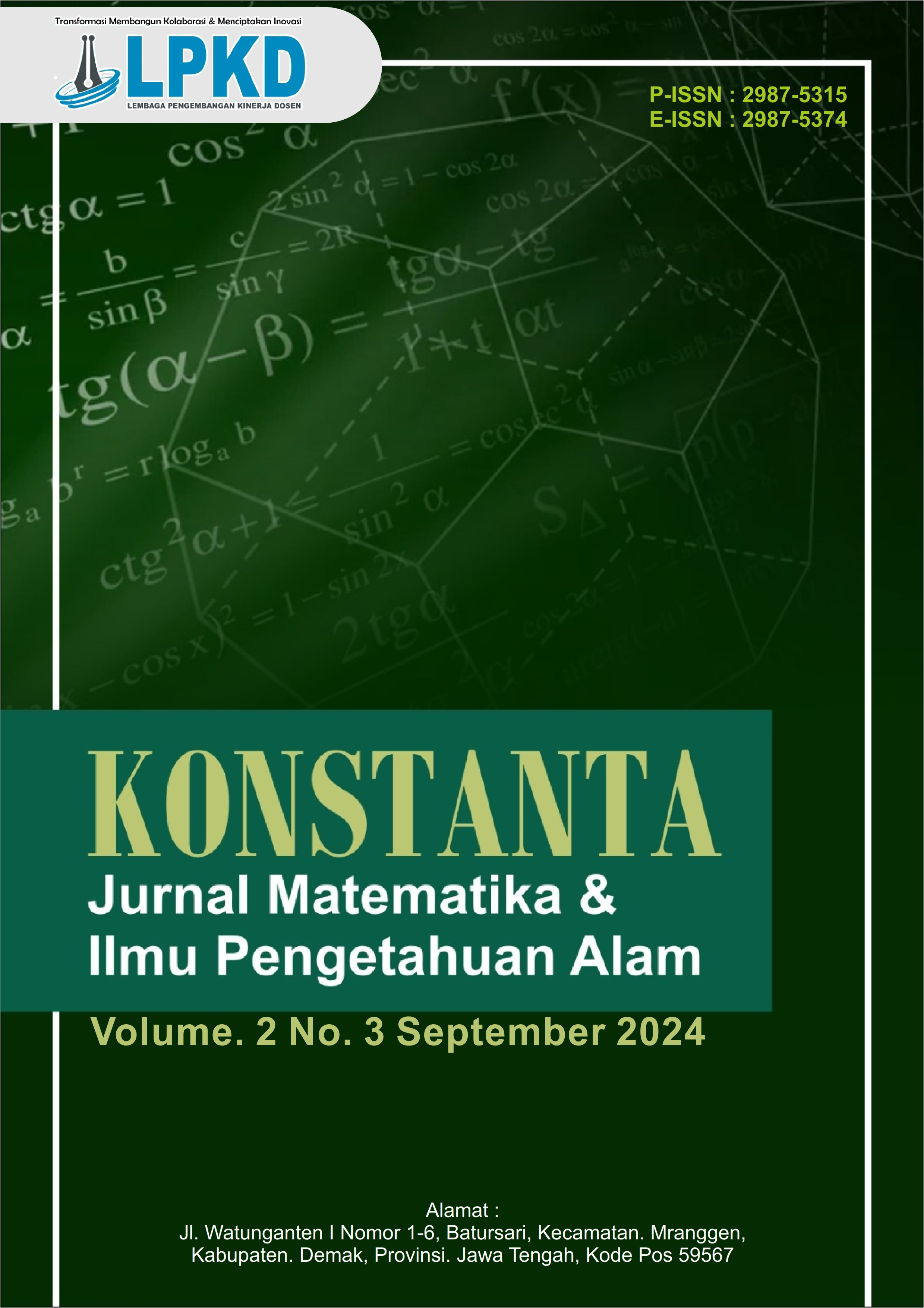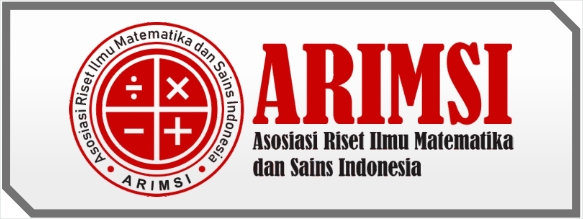Perbedaan Peningkatan Kemampuan Komunikasi Matematis Siswa yang Diajarkan dengan Model Pembelajaran Tipe Two Stay Two Stray dan Think Pair Share
DOI:
https://doi.org/10.59581/konstanta.v2i3.3926Keywords:
Enhancement, Learning, Cooperative, Communication, MathematicalAbstract
Based on the observations that have been made, it is shown that students' mathematical communication skills are still relatively low so that an innovative learning model is needed to improve students' mathematical communication skills. This study aims to see whether the improvement in students' mathematical communication skills taught with the Two Stay Two Stray cooperative learning model is higher than the mathematical communication skills of students taught with the Think Pair Share cooperative learning model and to see how the improvement in mathematical communication skills taught with the two models. This study is a study that is included in the quasi-experimental category with a pretest-posttest control group design. The subjects in this study were 62 students in grades VIII-A and VIII-E of SMP Negeri 4 Balige. Based on the research that has been done, the results of the N-Gain test were obtained with an average N-Gain value in experimental class 1, namely 0.813 in accordance with the Gain index criteria in the high category and the average N-Gain value in experimental class 2, namely 0.693 in accordance with the Gain index criteria in the medium category. Based on the research that has been done, because the data is normally distributed and homogeneous, the hypothesis test is carried out using the t-test. Through the t-test that has been done, it was obtained that , namely 2.465>2.000. Therefore is rejected, which means that the increase in mathematical communication skills of students taught with the Two Stay Two Stray cooperative learning model is higher than those taught with the Think Pair Share cooperative learning model.
References
A, Shilphy. (2020). Model-model Pembelajaran. Yogyakarta: CV Budi Utama.
Ahmad, M., Rohani, Azhari, U., & Sabril. (2022). Pendidikan Matematika Realistik Untuk Membelajarkan Kreativitas dan komunikasi Matematika. Pekalongan: PT Nasya Expanding Management.
Alosius, L. (n.d.). Pentingnya kemampuan komunikasi matematika bagi mahasiswa calon guru matematika. Gema Wiralodra.
Ananda, R., & Fadhli, M. (2018). Statisik Pendidikan: Teori dan Praktik dalam Pendidikan. Medan: Widya Puspita.
Aprilianis, A. G., & Netti, K. M. (2024). Pengaruh Model Kooperatif Tipe Two Stay Two Stray (TSTS) Terhadap Kemampuan Komunikasi Matematis Siswa di SMA Negeri 1 Tugala Oyo. Jurnal Cendekia: Jurnal Pendidikan Matematika, 8(2), 986-987.
Arnita. (2013). Pengantar Statistika. Bandung: Citapustaka Medan Perintis.
Arum, W. T. A., & Sri, R. (2018). Pembelajaran matematika dengan strategi Two Stay Two Stray dan Think Pair Share ditinjau dari komunikasi matematika siswa. Program Studi Pendidikan Matematika FKIP UMS, 259-267.
Aulia, R., & Waminton, R. (2017). Perbedaan Kemampuan Komunikasi Matematis Siswa pada Pembelajaran Kooperatif Tipe Think Pair Share dan Pembelajaran Kooperatif Tipe Two Stay Two Stray di Kelas VIII SMP N 27 Medan. Jurnal Inspiratif, 3(3), 82-93.
Kariani, R., Frida, M. A. S., & Dewi, A. (2019). Pembelajaran Think Talk Write (TTW) Untuk Meningkatkan Kemampuan Komunikasi Matematis Dan Sikap Positif Siswa. Surabaya: CV. Jakad Media Publishing.
Khaatimah, H., & Restu, W. (2017). Efektivitas Model Pembelajaran Cooperative Integrated Reading And Composition Terhadap Hasil Belajar. Journal Teknologi Pendidikan, 2(2), 76-87.
Maharani, R., & Hendra, S. (n.d.). Pengaruh Penerapan Model Pembelajaran Kooperatif Tipe Two Stay Two Stray Terhadap Kemampuan Komunikasi Matematis Peserta Didik Kelas VIII SMP Negeri 31 Padang. Jurnal Edukasi dan Penelitian Matematika, 9(1), 122-127.
Risqa, Ana, et al. (2024). Perbedaan Hasil Kemampuan Komunikasi Matematis Siswa Menggunakan Model Pembelajaran TSTS dan TPS. Jurnal Pendidikan Matematika, 6(1), 1119-1126.
Rohani, Marzuki, et al. (2019). Pendidikan Matematika Realistik Untuk Membelajarkan Kreativitas dan Komunikasi Matematika. Pekalongan: PT. Nasya Expanding Management.
Sihotang, Hormaulina. (2023). Metode Penelitian Kuantitatif. Jakarta: UKI Press.
Silitonga, P. M. (2014). Statistik: Teori dan Aplikasi Dalam Penelitian. Medan: FMIPA, Universitas Negeri Medan.
Sudjana. (2016). Metoda Statistika. Bandung: PT. TARSITO BANDUNG.
Sugiyono. (2015). Metode Penelitian Kuantitatif, Kualitatif, dan R&D. Bandung: ALFABETA, cv.
Sujarwanto. (2022). Think Pair Share Solusi Memahami Pembangun Cerpen. Lombok Tengah: Pusat Pengembangan Pendidikan dan Penelitian Indonesia.
Sukarelawan, M. Toni, K. I., & Suci, M. A. (n.d.). N-Gain Vs Stacking. Yogyakarta: Suryacahaya.
Supardi. (2017). Statistik Penelitian Pendidikan. Depok: PT RAJAGRAFINDO PERSADA.
Supriadi, Atang. (2019). Buku Ringkasan Materi dan Latihan Brilian Matematika untuk SMP/MTs Kelas VIII. Bandung: Grafindo Media Pratama.
Zaenab. (2021). Pembelajaran Kimia dengan Model Two Stay Two Stray (TSTS). Jawa Tengah: Penerbit Yayasan Lembaga Gumum Indonesia (YLGI).
Downloads
Published
How to Cite
Issue
Section
License
Copyright (c) 2024 Konstanta : Jurnal Matematika dan Ilmu Pengetahuan Alam

This work is licensed under a Creative Commons Attribution-ShareAlike 4.0 International License.













